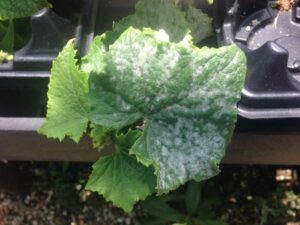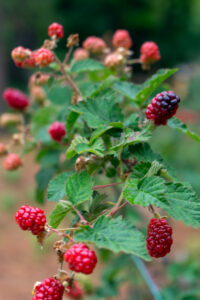IPM Approaches for Summer Garden Challenges
go.ncsu.edu/readext?1082179
en Español / em Português
El inglés es el idioma de control de esta página. En la medida en que haya algún conflicto entre la traducción al inglés y la traducción, el inglés prevalece.
Al hacer clic en el enlace de traducción se activa un servicio de traducción gratuito para convertir la página al español. Al igual que con cualquier traducción por Internet, la conversión no es sensible al contexto y puede que no traduzca el texto en su significado original. NC State Extension no garantiza la exactitud del texto traducido. Por favor, tenga en cuenta que algunas aplicaciones y/o servicios pueden no funcionar como se espera cuando se traducen.
Português
Inglês é o idioma de controle desta página. Na medida que haja algum conflito entre o texto original em Inglês e a tradução, o Inglês prevalece.
Ao clicar no link de tradução, um serviço gratuito de tradução será ativado para converter a página para o Português. Como em qualquer tradução pela internet, a conversão não é sensivel ao contexto e pode não ocorrer a tradução para o significado orginal. O serviço de Extensão da Carolina do Norte (NC State Extension) não garante a exatidão do texto traduzido. Por favor, observe que algumas funções ou serviços podem não funcionar como esperado após a tradução.
English
English is the controlling language of this page. To the extent there is any conflict between the English text and the translation, English controls.
Clicking on the translation link activates a free translation service to convert the page to Spanish. As with any Internet translation, the conversion is not context-sensitive and may not translate the text to its original meaning. NC State Extension does not guarantee the accuracy of the translated text. Please note that some applications and/or services may not function as expected when translated.
Collapse ▲Friday, June 20th marked the official start of summer, and if you’ve spent even one season in Wilmington, North Carolina, you know to expect high temperatures and high humidity. While these conditions can fuel summer growth, they also create the perfect environment for common garden stressors like powdery mildew, insect damage, and heat stress. Instead of reacting with one-size-fits-all treatments, gardeners can turn to Integrated Pest Management (IPM). IPM is a science-based, environmentally sensitive approach to managing garden problems that minimizes risks to people, pollinators, and the planet.

One of the most recognizable summer garden problems, powdery mildew is a fungal disease that affects a wide range of plants, including cucurbits (like cucumbers and melons), tomatoes, and grapes. Unlike some pathogens, powdery mildew fungi are host-specific, meaning the strain infecting your squash likely won’t spread to your basil.
These fungi thrive in humid conditions and take advantage of moisture on the surface of leaves. This is why it is so important to avoid overhead watering or wetting the leaves when irrigating. To manage powdery mildew, the first step is to understand its biology. The fungus forms a visible white or gray coating on the surface of leaves, which can impair photosynthesis and lead to reduced yields. Remove infected foliage carefully, and isolate affected plants if possible. Prune surrounding vegetation to increase air circulation and reduce humidity. For treatment, consider organic options that contain fungicides like potassium bicarbonate. This disrupts the fungus’s cellular processes and may help prevent its spread. Always follow label instructions and consider using any spray during cooler parts of the day to minimize plant stress.
It’s easy to panic when you see chewed leaves, but not all insect damage is a bad thing. Just because an insect is feeding on your plant doesn’t mean it’s a pest in need of control. Many insects are part of a healthy garden ecosystem and some feeding is to be expected. Rather than trying to eliminate all insect damage, aim to minimize extreme damage. One effective IPM strategy is to plant with intention. Be sure to include a variety of plants to give insects more options. This can help dilute pressure on your primary crops, allowing you to enjoy harvests even while sharing your garden with pollinators, caterpillars, and other arthropods. When intervention is needed, start with regular scouting. Check for signs of pest populations such as clusters of aphids, holes from beetles, or leaf discoloration from spider mites. Introduce or support beneficial insects like ladybugs and lacewings, and avoid broad-spectrum pesticides that harm both pests and pollinators. When necessary, use low-toxicity options like insecticidal soap or a horticultural oil.

Plants under heat stress are more vulnerable to pests and diseases. Mulching, watering deeply at the base of the plant, and choosing heat-tolerant or regionally adapted plant varieties can reduce this stress. Avoid fertilizing during extreme heat, as this can push growth when the plant is already struggling to stay hydrated. Remember that IPM encourages a long-term, proactive approach. By monitoring your garden, understanding the specific challenges each season brings, and using a combination of cultural, biological, and chemical tools only when necessary, you can protect your plants and the environment from avoidable harm.
Gabriella de Souza is the Consumer Horticulture Agent and N.C. Cooperative Extension – New Hanover County Center. The office is located at the Arboretum, 6206 Oleander Drive, and is open weekdays from 8 a.m. to 5 p.m. Reach her at gadesouz@ncsu.edu or 910-798-7660.




